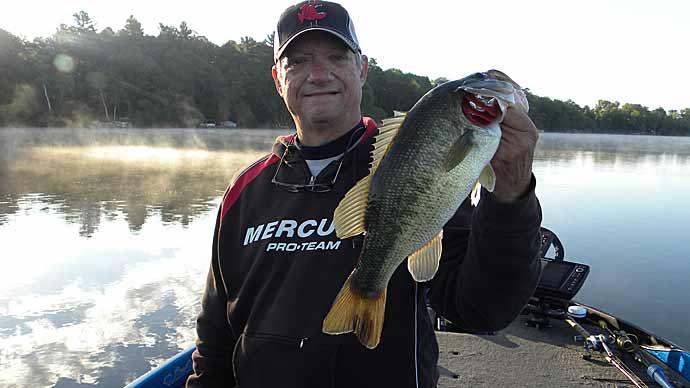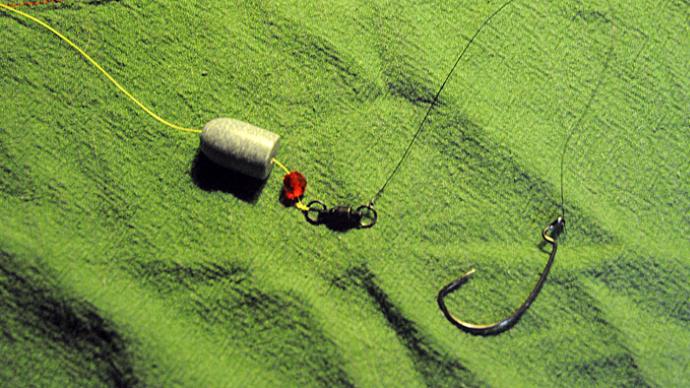
When you think winter bass fishing, you can often eliminate some of the faster moving baits you used during the summer months. Slow-moving baits rule during Winter. With that in mind, I want to talk about fishing a Carolina Rig during the winter months for bass.
Many bass fishermen name the Carolina Rig "the ball and chain", but I refer to it as "big bass success". Bass during the winter will be close to deep water on the bodies of water that you're fishing, and one thing for sure, they will never be far from food. With the colder water temperatures, bass metabolism will slow down. In the summer, it's not unusual for bass to feed multiple times a day, but they may eat every other day at best in the winter. When fishing in these conditions, you will have to slow down and keep your bait in the strike zone longer to entice bites, making the Carolina Rig a presentation that can let you do just that.
Equipment Breakdown
Rods & Reel Options
When it comes to equipment for Carolina Rigs, I use a 7’6” MH baitcaster rod for this tactic. You're fishing with weights that range from 1/2oz to 1oz, so you will need a little beef when it comes to your rod choice. My biggest reason for using a longer rod is that you will need to lengthen your leader, and the longer rod makes it easier to cast this setup. For my reel choice, I use a 6.3:1 reel speed. You are not moving the bait with the reel. You're just picking up the slack you're creating by your rod movement.
Line Options
My main line for Carolina rig fishing is 16lb to 18lb test Sunline Sniper. This fluorocarbon line gives you better hook sets with limited line stretch. When it comes to your leader, this is where fishermen are getting a little confused because they're often using a fluorocarbon leader as well. This is key, and I think a critical point, your leader should be made from a monofilament line instead.
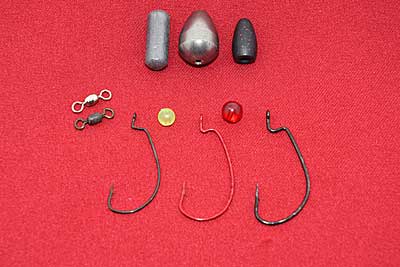
One of the characteristics of fluorocarbon is it sinks where the monofilament line floats. When Carolina rigs were fished through the years, a bait up off the bottom trailing the sinker has been instrumental in getting more bites from reluctant bass. When using a leader made of fluorocarbon, your bait will be on the bottom. You will get some bites off this rigging, but it won't be as many as if your bait were up off the bottom when using a monofilament leader.
I learned this the hard way one day. In my boat, I carry a line bag, and I ran out of the mono that I was using for rig leaders, so I grabbed a piece of fluorocarbon line and tied it on as my leader. My bite rate went down when I switched to a fluorocarbon leader. So, I took out a rod spooled with monofilament, stripped off a piece of line, and made a monofilament leader. I started to put bass in the boat again. Often, the unimportant things you don't think will matter turn out to be significant differences overall. This is one.
Leader length should vary with the temperature of the water or water clarity you're fishing. You will want to fish a 2 1/2ft leader length in spring and winter. As summer water temperatures heat up, stretch this out to 3ft to 4ft. It's a similar process with the water clarity. If you're fishing in dirty water conditions, shorten your leader. If you're fishing in clear water conditions, lengthen your leader. It all comes down to bites, so play with leader lengths and let the bass tell you what they want.
Sinkers
This is another category that has been through some substantial change. For the longest time, lead was the only material that sinkers were made of, but that has changed. You have three primary materials to get sinkers in today’s environment: lead, steel, and tungsten.
Lead is still the cheapest and the most available. Steel follows lead, it costs a little more, and the weight is bigger than lead. The most significant factor with steel is it's a harder material than lead, so it transmits feel better than lead, but not as good as tungsten. It's close.
Last is tungsten. Its sinker size is smaller than lead and steel, and tungsten is harder. Tungsten transmits feel the best of all three materials, and it's also the most expensive of all three.
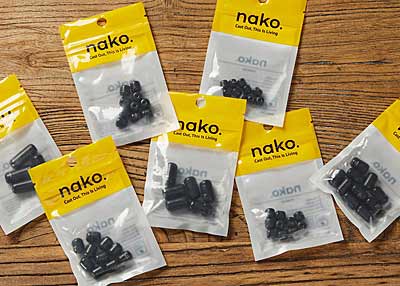
I'm a huge fan of throwing a 1oz lead sinker when it comes to rig sinkers. This is driven by getting a better feel. But the bigger size gets hung up more. Given tungsten weights are relatively small, I have looked at tungsten for my c-rig. They used to cost $8.00 for one tungsten sinker, but now you can find Carolina weights for just $4.00 per sinker, making them far more affordable than in the past. So now I've been experimenting with tungsten and like the results so far.
Alternatively, I have been using a 1/2oz steel sinker in place of my 1oz lead sinker. I'm getting a better feel, which was my goal, and it's not getting hung up as much. Using less weight gives me a better chance of getting my rig back because the sinker doesn't wedge in the rocks as bad as my 1oz lead sinker did. Which overall is even better yet.
You will need a handful of plastic or glass beads, swivels, and hooks to round out equipment. I use 3/0 to 5/0 Gamakatsu EWG hooks when it comes to Gamakatsu EWG hooks.
Bait Options
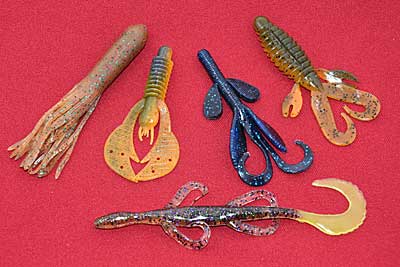
Picking baits, the book is wide open. I'm a lizard fan; my number one bait is a 6” Pumpkin Chartreuse tail lizard. I have a lot of history and have cashed checks off this bait for many years running, so I have a tough time changing. But there are more baits other than lizards for Carolina rig fishing, and I have been exploring more baits with success.
Craws and creature baits are good choices when you're fishing deep water rock areas that are filled with crawfish. If you want a sleeper bait, a tube or craw tube falls into this category. One key is to push a piece of a Styrofoam packing peanut inside your tube to get it to float.
The best advice I can give you is to open your plastics box, experiment with different baits, see what works best in your waters, and run with that.
Fishing Carolina Rigs
In fishing rigs, let your electronics lead your way. A good set of electronics will pay big dividends and save you a lot of time when you're looking for critical areas, but I can also add that I find some of my best areas by feel. When I see an area on my Humminbirds that I need to check, I'll get up on my front deck and make a few casts. I'm trying to get a feel for the rocks.
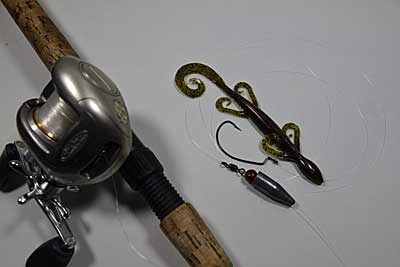
Over the years, I judge areas by how tough it's to get bait through the rocks. If it's easy to get my bait through an area and I don't get any bites, I keep covering water. If I have a tough time getting a bait through an area or getting snagged, these have become the top areas that I pay more attention to. I call these “the nasty rock” areas. Something about these rocks draws more and bigger bass, so you need to slow down and pick these specific areas apart.
Humminbird’s Mega imaging has made finding these key areas more straightforward, but what has also accelerated finding little vital areas that stand out is my Mega 360. I can stand up on my front deck, look at my Mega 360, and know where I need to place my next cast. I can see on my screen every slight turn in the rocks that are made, areas where the bass should be sitting, and even sometimes if there are bass sitting there. Mega 360 is that powerful of a tool to have. It makes breaking down rock areas easier as you can see so much of what you need to see, making it simple to get your bait in the areas you need to.
I hope these Carolina rig tips get you started if you have never fished a rig before, and if you have, I hope I gave you a few new tips to help you put more bass in your boat this winter. When you get into an area, start to break it down. Look for rocks that will hold bass. Once you make contact, they are not going to move far. Use this to your advantage. Have a great winter season.
BassResource may receive a portion of revenues if you make a purchase using a link above.



